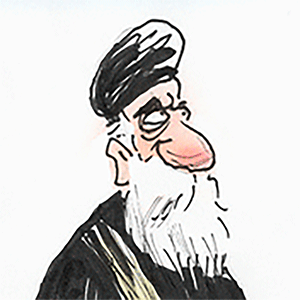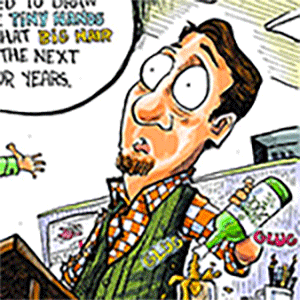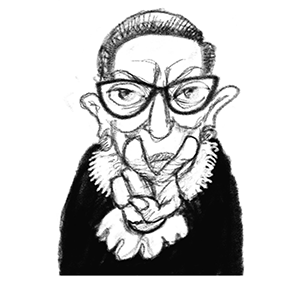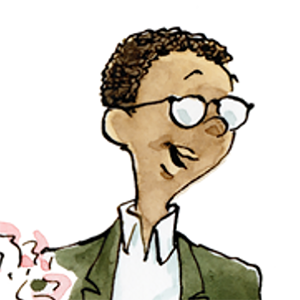Secret US-Russia talks led to plan that blindsided Ukraine
Published in News & Features
The controversial 28-point plan dropped suddenly by the Trump administration to Ukraine as a take-it-or-leave it proposition mere days ago was mostly the result of several weeks of negotiations behind the scenes between Steve Witkoff and his Russian counterpart Kirill Dmitriev that excluded not only Ukraine and its allies but even some key U.S. officials.
Faced with a Thanksgiving holiday deadline, European officials are racing to buy Ukrainian President Volodymyr Zelenskyy more time with their own counter-proposal on how to end the war that will be presented to U.S. officials on Sunday in Switzerland.
This reconstruction on how the ultimatum came about and who was really behind it is based on conversations with several people familiar with the deliberations who spoke on condition of anonymity to discuss delicate negotiations.
For Europeans, the alarm went off when a new player was introduced to the scene: U.S. Army Secretary Dan Driscoll, a close friend of JD Vance going back to their days at Yale Law School. It was he who told their ambassadors and Ukraine officials in an urgent tone that U.S. President Donald Trump had run out of patience, that Ukraine was in a bad position and that Kyiv had to agree to concede territory.
The fact that it was a figure close to the vice president tasked to push the plan during a trip to Kyiv this past week was telling. It was a weighty assignment typically undertaken by high-level diplomats, like Secretary of State Marco Rubio or other foreign diplomats. Vance and Rubio have had different takes on how the war should end, with Vance taking a more isolationist bent and Rubio much warier of being manipulated by Russia.
Before European leaders and Zelenskyy jumped into action, they needed to try and understand who was most responsible for the framework. They had been entirely shut out and it wasn’t clear who had the most influence with Trump on the issue.
As Polish Prime Minister Donald Tusk quipped pointedly on X: “Before we start our work, it would be good to know for sure who is the author of the plan and where was it created.”
The picture that emerged was that Witkoff and Dmitriev forged the plan during an October meeting in Miami that included Jared Kushner, Trump’s son-in-law, who worked with Witkoff on the Israel-Gaza peace deal, according to people familiar with the matter.
Rubio hadn’t been fully looped in until late. Trump also found out about it at the last minute, but he blessed it once he was briefed.
A deal would give him a win as he faces a domestic political slump, with Democrats shellacking his party in early November elections, raising the possibility of painful midterm election results next year. A previously pliant Republican-led Congress is also bucking his wishes to release files related to disgraced financier Jeffrey Epstein, with whom Trump once had a relationship before they fell out.
In addition, the U.S. president has taken an increasingly aggressive posture in the Caribbean and is weighing a possible strike against Venezuela.
Meanwhile, Zelenskyy is battling a corruption scandal that threatens to engulf his powerful chief of staff, Andriy Yermak. So he’s feeling the heat, too, back home.
For Trump, what matters is getting a deal, not the fine print. But for Ukrainians, the devil is in the details. Their fears that Russia drafted large swathes of the document unbeknown to them were proved right. The document still bears the hallmarks of a direct translation from Russian with oddly formulated sentences.
The measures would force Ukraine to cede large chunks of land, reduce the size of its military and forbid it from ever joining NATO. The plan would also reestablish economic ties between Russia and the U.S., the world’s largest economy.
To try and correct course, Ukraine and its Europeans allies will insist that discussions with Russia on any territorial swaps can only take place once the war ceases along the current line of contact. They also want a security agreement that mirrors NATO’s Article 5 mutual defense clause, among other measures.
Efforts to find a resolution have gone through operatic fits and spurts since Trump returned to the White House in January, when he pledged to stop the fighting in a matter of days.
The current episode is no less dramatic than previous ones that saw Zelenskyy upbraided by Vance and Trump in an Oval Office meeting. Back then, European leaders rushed to the White House following a hastily staged summit with Trump and Russian President Vladimir Putin in Alaska in August. Their suspicion was that Putin had a strange hold on Trump. The sly smile the Russian president flashed in the back seat of “the beast” car did little to put them at ease.
When Trump suddenly declared in October he was up for a second summit with Putin, this time in Budapest, it felt like a replay of the summer. However, this time, the Europeans were grateful to have Rubio in their corner. The meeting was canceled after the U.S. top official had a call with his Russian counterpart and realized the Russians hadn’t budged on their asks.
What they didn’t know was that in the background, Witkoff was putting together what came to be the 28-point plan. They believed Rubio had displaced the special envoy and real estate mogul as the key U.S. interlocutor on Ukraine.
U.S. Senator Mike Rounds, a South Dakota Republican, said that Rubio — while en route to Geneva — told him and U.S. Senator Jeanne Shaheen, a Democrat from New Hampshire, that the 28-point plan is a Russian proposal and that “it is not our recommendation. It is not our peace plan.”
Rubio later wrote on X that the peace proposal was authored by the U.S. and that it offers a strong framework for negotiations. But his choice of words was careful: “It is based on input from the Russian side. But it is also based on previous and ongoing input from Ukraine.”
He traveled to Geneva for the talks on Sunday, joining Witkoff and Driscoll. Ukraine is represented by Yermak. It’s unclear if the Americans even want to see the Europeans together with the Ukrainians.
Driscoll has been in constant contact with Witkoff and Vance as he became the new interface with European officials. Before this past week, his public comments about Russia and Ukraine were largely based on his calls for technological reform in the U.S. military, based on how the two countries have deployed drones on the battlefield.
Vance’s deputy national security adviser, Andy Baker, has also been heavily involved, the people said, in yet another sign of Vance’s influence.
Confronted with pushback, Trump wasn’t irate. He told NBC on Saturday that the proposal is “not my final offer,” hinting that contrary to what Driscoll had said behind closed doors, there was perhaps room for maneuver.
Yet his mood worsened on Sunday.
Ukraine’s leadership has “EXPRESSED ZERO GRATITUDE FOR OUR EFFORTS,” he said in a social media post.
A lot will depend on how talks in Switzerland go, and in which direction U.S. planes go next: back home or further east, toward Moscow.
_____
(With assistance from Jamie Tarabay and Chris Miller.)
_____
©2025 Bloomberg L.P. Visit bloomberg.com. Distributed by Tribune Content Agency, LLC.







Comments